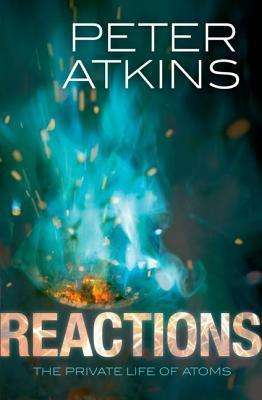
Reactions: The private life of atoms (Oxford University Press)
Check my rate
| Main centres: | 1-3 business days |
| Regional areas: | 3-4 business days |
| Remote areas: | 3-5 business days |

| Main centres: | 1-3 business days |
| Regional areas: | 3-4 business days |
| Remote areas: | 3-5 business days |
Published by Oxford University Press, 2013, softcover, illustrated, 190 pages, condition: as new.
Illustrated with remarkable new full-color images--indeed, one or more on every page--and written by one of the world's leading authorities on the subject, Reactions offers a compact, pain-free tour of the inner workings of chemistry.
Reactions begins with the chemical formula almost everyone knows--the formula for water, H2O--a molecule with an "almost laughably simple chemical composition." But Atkins shows that water is also rather miraculous--it is the only substance whose solid form is less dense than its liquid (hence ice floats in water)--and incredibly central to many chemical reactions, as it is an excellent solvent, being able to dissolve gases and many solids. Moreover, Atkins tells us that water is actually chemically aggressive, and can react with and destroy the compounds dissolved in it, and he shows us what happens at the molecular level when water turns to ice--and when it melts.
Moving beyond water, Atkins slowly builds up a toolkit of basic chemical processes, including precipitation (perhaps the simplest of all chemical reactions), combustion, reduction, corrosion, electrolysis, and catalysis. He then shows how these fundamental tools can be brought together in more complex processes such as photosynthesis, radical polymerization, vision, enzyme control, and synthesis.
Peter Atkins is the world-renowned author of numerous best-selling chemistry textbooks for students. In this crystal-clear, attractively illustrated, and insightful volume, he provides a fantastic introductory tour--in just a few hundred colorful and lively pages - for anyone with a passing or serious interest in chemistry.
Reactions: The Private Life of Atoms" is a captivating exploration into the microscopic world of atoms, providing readers with a fascinating journey through the intricate dance of particles that shape our universe. The author seamlessly integrates discussions on , providing clarity on the spatial arrangement of atoms in molecules. By incorporating this essential concept, the book not only enhances the reader's understanding of chemical bonding but also adds a practical dimension to the exploration of atoms' private lives.